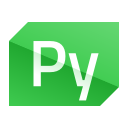QStackedWidget¶
The
QStackedWidgetclass provides a stack of widgets where only one widget is visible at a time. MoreвҖҰ

Synopsis¶
Functions¶
def
addWidget(w)def
count()def
currentIndex()def
currentWidget()def
indexOf(arg__1)def
insertWidget(index, w)def
removeWidget(w)def
widget(arg__1)
Slots¶
def
setCurrentIndex(index)def
setCurrentWidget(w)
Signals¶
def
currentChanged(arg__1)def
widgetRemoved(index)
Detailed Description¶
QStackedWidgetcan be used to create a user interface similar to the one provided byQTabWidget. It is a convenience layout widget built on top of theQStackedLayoutclass.Like
QStackedLayout,QStackedWidgetcan be constructed and populated with a number of child widgets (вҖңpagesвҖқ):firstPageWidget = QWidget() secondPageWidget = QWidget() thirdPageWidget = QWidget() stackedWidget = QStackedWidget() stackedWidget.addWidget(firstPageWidget) stackedWidget.addWidget(secondPageWidget) stackedWidget.addWidget(thirdPageWidget) layout = QVBoxLayout() layout.addWidget(stackedWidget) setLayout(layout)
QStackedWidgetprovides no intrinsic means for the user to switch page. This is typically done through aQComboBoxor aQListWidgetthat stores the titles of theQStackedWidgetвҖҳs pages. For example:pageComboBox = QComboBox() pageComboBox.addItem(tr("Page 1")) pageComboBox.addItem(tr("Page 2")) pageComboBox.addItem(tr("Page 3")) pageComboBox.activated[int].connect(stackedWidget.setCurrentIndex)When populating a stacked widget, the widgets are added to an internal list. The
indexOf()function returns the index of a widget in that list. The widgets can either be added to the end of the list using theaddWidget()function, or inserted at a given index using theinsertWidget()function. TheremoveWidget()function removes a widget from the stacked widget. The number of widgets contained in the stacked widget can be obtained using thecount()function.The
widget()function returns the widget at a given index position. The index of the widget that is shown on screen is given bycurrentIndex()and can be changed usingsetCurrentIndex(). In a similar manner, the currently shown widget can be retrieved using thecurrentWidget()function, and altered using thesetCurrentWidget()function.Whenever the current widget in the stacked widget changes or a widget is removed from the stacked widget, the
currentChanged()andwidgetRemoved()signals are emitted respectively.See also
- class PySide2.QtWidgets.QStackedWidget([parent=None])В¶
- param parent:
Constructs a
QStackedWidgetwith the givenparent.See also
- PySide2.QtWidgets.QStackedWidget.addWidget(w)В¶
- Parameters:
- Return type:
int
Appends the given
widgetto theQStackedWidgetand returns the index position. Ownership ofwidgetis passed on to theQStackedWidget.If the
QStackedWidgetis empty before this function is called,widgetbecomes the current widget.
- PySide2.QtWidgets.QStackedWidget.count()В¶
- Return type:
int
This property holds the number of widgets contained by this stacked widget.
By default, this property contains a value of 0.
See also
- PySide2.QtWidgets.QStackedWidget.currentChanged(arg__1)В¶
- Parameters:
arg__1 вҖ“ int
- PySide2.QtWidgets.QStackedWidget.currentIndex()В¶
- Return type:
int
This property holds the index position of the widget that is visible.
The current index is -1 if there is no current widget.
By default, this property contains a value of -1 because the stack is initially empty.
See also
- PySide2.QtWidgets.QStackedWidget.currentWidget()В¶
- Return type:
Returns the current widget, or
Noneif there are no child widgets.See also
- PySide2.QtWidgets.QStackedWidget.indexOf(arg__1)В¶
- Parameters:
arg__1 вҖ“
PySide2.QtWidgets.QWidget- Return type:
int
Returns the index of the given
widget, or -1 if the givenwidgetis not a child of theQStackedWidget.See also
- PySide2.QtWidgets.QStackedWidget.insertWidget(index, w)В¶
- Parameters:
index вҖ“ int
- Return type:
int
Inserts the given
widgetat the givenindexin theQStackedWidget. Ownership ofwidgetis passed on to theQStackedWidget. Ifindexis out of range, thewidgetis appended (in which case it is the actual index of thewidgetthat is returned).If the
QStackedWidgetwas empty before this function is called, the givenwidgetbecomes the current widget.Inserting a new widget at an index less than or equal to the current index will increment the current index, but keep the current widget.
See also
- PySide2.QtWidgets.QStackedWidget.removeWidget(w)В¶
- Parameters:
Removes
widgetfrom theQStackedWidget. i.e.,widgetis not deleted but simply removed from the stacked layout, causing it to be hidden.Note
Parent object and parent widget of
widgetwill remain theQStackedWidget. If the application wants to reuse the removedwidget, then it is recommended to re-parent it.See also
- PySide2.QtWidgets.QStackedWidget.setCurrentIndex(index)В¶
- Parameters:
index вҖ“ int
This property holds the index position of the widget that is visible.
The current index is -1 if there is no current widget.
By default, this property contains a value of -1 because the stack is initially empty.
See also
- PySide2.QtWidgets.QStackedWidget.setCurrentWidget(w)В¶
- Parameters:
Sets the current widget to be the specified
widget. The new current widget must already be contained in this stacked widget.See also
- PySide2.QtWidgets.QStackedWidget.widget(arg__1)В¶
- Parameters:
arg__1 вҖ“ int
- Return type:
Returns the widget at the given
index, orNoneif there is no such widget.See also
- PySide2.QtWidgets.QStackedWidget.widgetRemoved(index)В¶
- Parameters:
index вҖ“ int
В© 2022 The Qt Company Ltd. Documentation contributions included herein are the copyrights of their respective owners. The documentation provided herein is licensed under the terms of the GNU Free Documentation License version 1.3 as published by the Free Software Foundation. Qt and respective logos are trademarks of The Qt Company Ltd. in Finland and/or other countries worldwide. All other trademarks are property of their respective owners.
